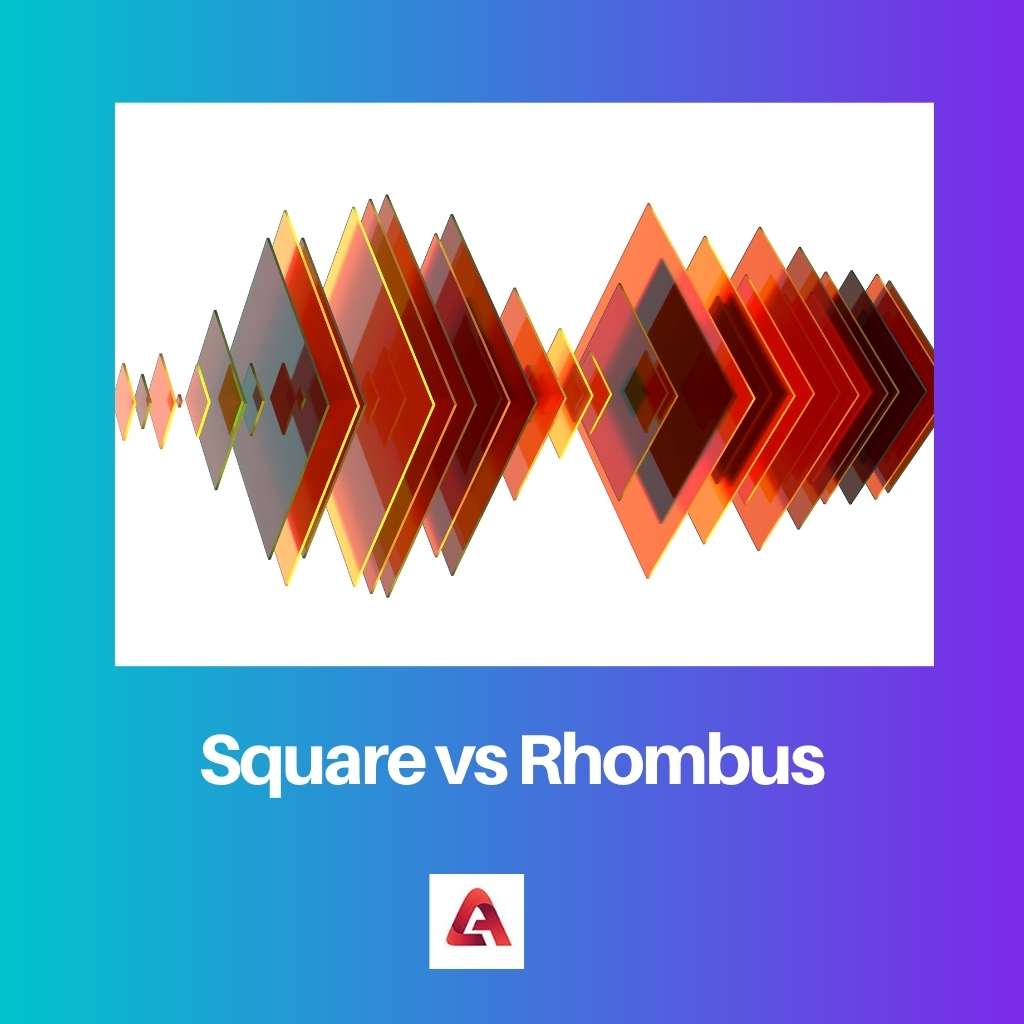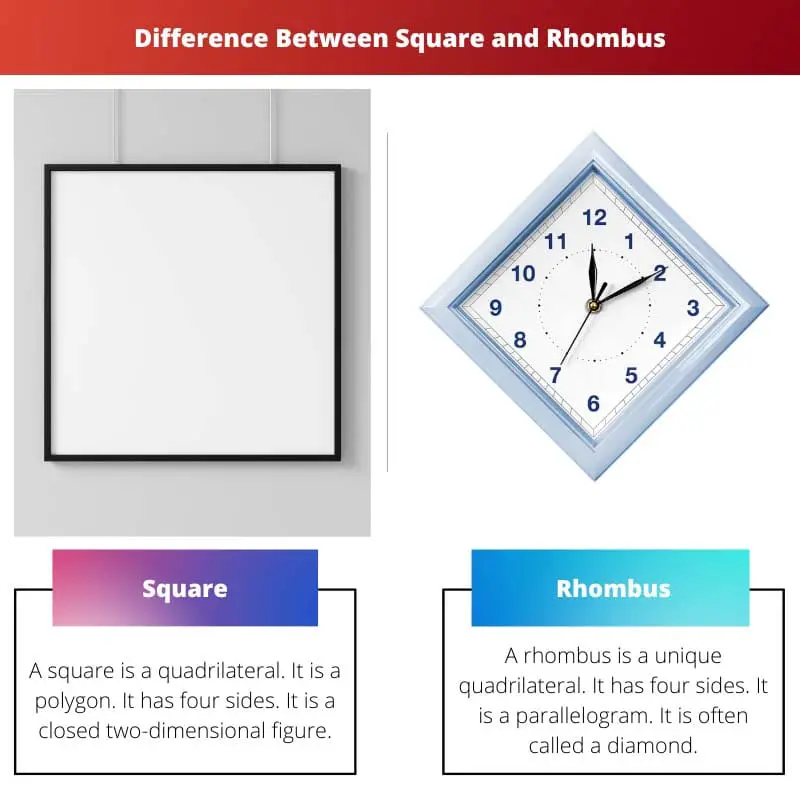Square and rhombus are geometric shapes with distinctive properties. They were discovered in ancient Egypt. The history of these two-dimensional shapes is associated with the attempts to solve everyday dilemmas like surveying.
Both are regular quadrilaterals according to Euclidean geometry. These two shapes have similar properties, like equal opposite sides and equal opposite angles.
But they are different in certain other criteria like the length of the diagonals. The sum of the interior angles of both these shapes is 360 degrees. The formulae for calculating the perimeter of these figures are also the same.
Key Takeaways
- All angles in a square measure 90 degrees, whereas a rhombus has equal angles but not necessarily right angles.
- A square has equal sides and angles, while a rhombus only has equal sides.
- Squares are always parallelograms and rectangles, but rhombuses are only parallelograms.
Square vs Rhombus
The difference between a square and a rhombus is that a square has four equal angles. But a rhombus has unequal angles, although its opposite angles are equal. A square is called a rhombus but not vice versa. As a rhombus does not have all the distinctive features of a square, it is a different quadrilateral.

Square is a two-dimensional plane figure with four straight sides. It has four 90-degree interior angles. It has two equal and finite diagonals like any rectangle.
The opposite sides of a square are parallel to each other, making it a parallelogram. It can fit the definitions of a rhombus, a polygon, a parallelogram, and a rectangle.
A rhombus is a shape that has four sides making it a quadrilateral. Although the sides of a rhombus are equal in length, it has angles of varying degrees.
The opposite sides are parallel, and hence it is a parallelogram. The plural of a rhombus is rhombi or rhombuses.
Comparison Table
| Parameters of Comparison | Square | Rhombus |
|---|---|---|
| Sides | Perpendicular to each other | Does not have perpendicular sides |
| Angles | All angles are equal | Only opposite angles are equal |
| Inscription on a circle | Can be inscribed | Cannot be inscribed |
| Lines of symmetry | Four | Two |
| Diagonals | Equal diagonals | Unequal diagonals |
What is Square?
A square is a quadrilateral. It is a polygon. It has four sides. It is a closed two-dimensional figure. All four sides are equal in length.
The four angles are 90 degrees each. The diagonals of a square are also equal in length. A rectangle can be called a square if all the sides have equal length.
The interior angles form right angles and have a sum of 360 degrees. The sides opposite to each other are parallel. The diagonals drawn in a square will bisect each other perpendicularly.
It has four vertices. With the diagonals, a square can be split into two isosceles triangles. The sides of a square have less length than its diagonals.
The diagonals of a square and its sides have a relationship. The length of the diagonal is equal to 1.414 times the length of its side.
The area of a square is equal to its side squared. The unit of the area is called the square unit.
The perimeter of a square is determined by multiplying the length of a side with four as all sides are equal. To find the length of the diagonal, the Pythagoras theorem can be applied.

What is Rhombus?
A rhombus is a unique quadrilateral. It has four sides. It is a parallelogram. It is called a diamond.
The opposite sides and opposite angles of a rhombus are parallel and have equal respect. It is similar to a square. A square can be called a kind of rhombus.
The word rhombus has its origin in the Greek language. It means something that can spin. It is used to refer to the cross-section of a bicone. This quadrilateral has interior angles that add up to 360 degrees.
It has supplementary adjacent angles as the angles make up a sum of 180 degrees. It has diagonals that bisect each other perpendicularly. While bisecting, the diagonals divide the interior angles equally.
Four congruent triangles are developed with the diagonals. Also, no circle can circumscribe or inscribe a rhombus. Unlike a square, a rhombus does not have equal interior angles. But it has sides of equal length. It does not have four right angles.
To find the area of a rhombus, the length of the diagonals should be multiplied and then divided the product by two. While the perimeter can be calculated by adding the length of the four sides.
It is equal to four times the length of one side. This formula is similar to that of a square.

Main Differences Between Square and Rhombus
- All angles of a square are equal but, in a rhombus, only the opposite angles are equal.
- A square has diagonals that are equal in length. While a rhombus has unequal diagonals.
- Unlike the square, a rhombus cannot be inscribed in a circle.
- There are four lines of symmetry in a square but only two in a rhombus.
- In a square, the sides are perpendicular to each other. But a rhombus does not have perpendicular sides.
- All angles of a square are 90 degrees each. But a rhombus has varied degree angles.
- A square can be called a rhombus, but a rhombus cannot be a square.




